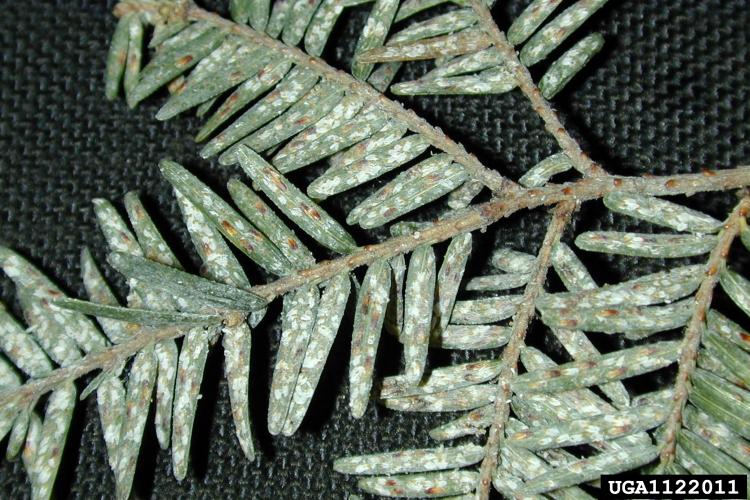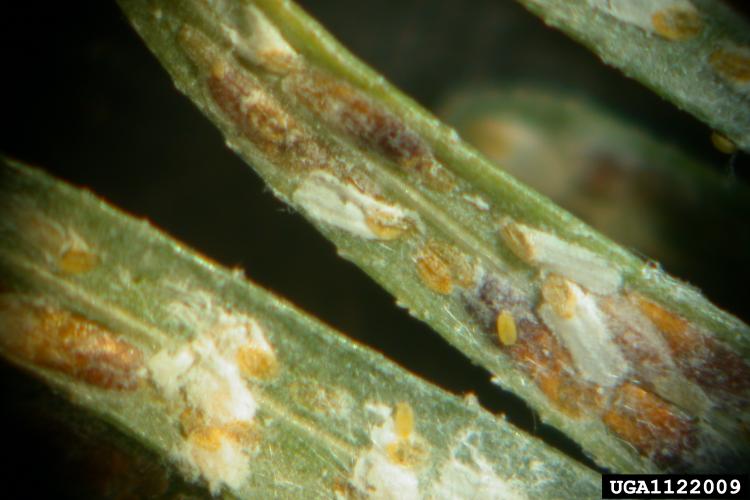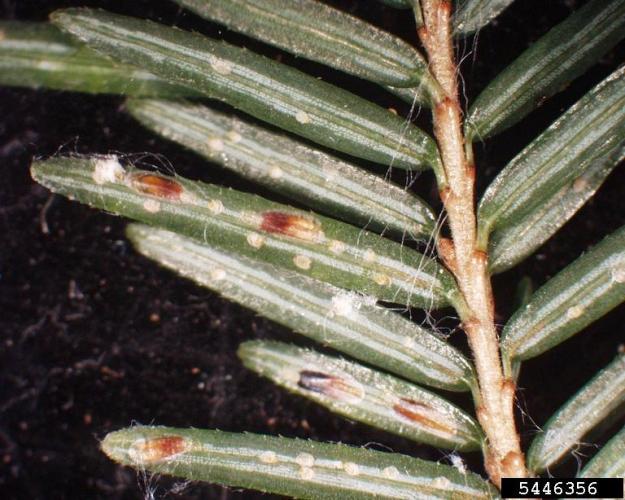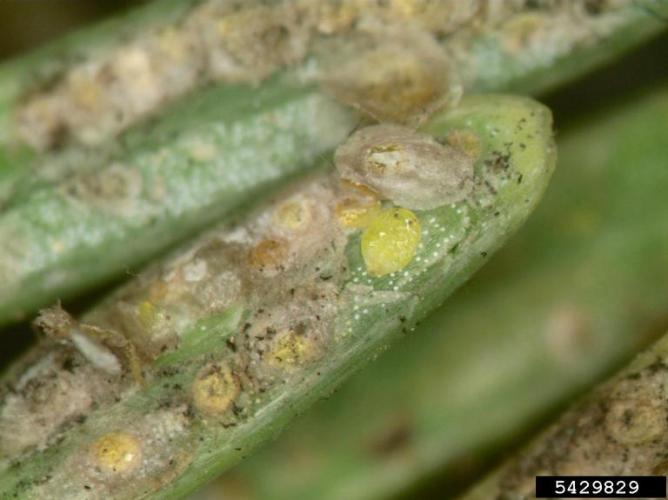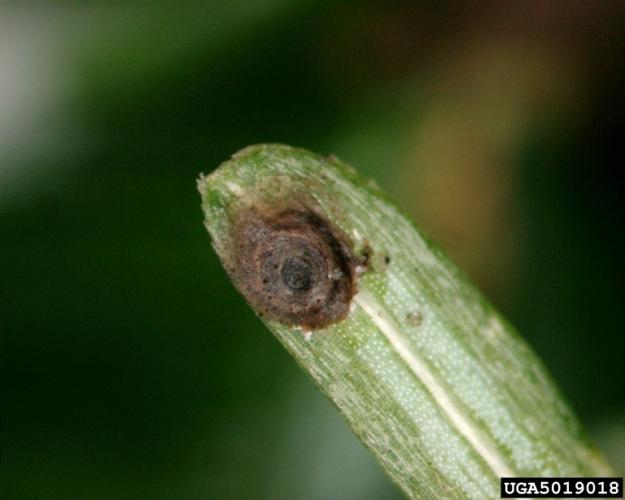Elongate Hemlock Scale
Identification
The elongate hemlock scale is in a group of insects called “armored scales”. The females and eggs are protected by a hard, waxy covering.
Adult females are soft-bodied, legless, wingless, and are enclosed in an elongate cover that is light yellow to brown, translucent, and about 2 mm long. The male cover is elongate, white, and about 1.5 mm long. Adult males are light brown, about 1.5 mm long, have legs and wings but are feeble-flyers. Crawlers, the legged first-stage nymphs that hatch from translucent eggs within the female cover, are soft-bodied, lemon-colored and about 0.1 mm long. Second-stage nymphs are enclosed in an oval, amber-colored cover, and are soft-bodied, sedentary and vary in size from 0.1 mm to 1 mm.
signs and symptoms
Look for yellowing of needles on the interior of the lower branches. The damage may also occur higher in the tree as scale populations increase. Look for the yellow-brown scale coverings and light white wool on the underside of the needles. This insect can cause premature needle drop, eventual branch dieback, and tree death with severe infestations.
See image slideshow above for signs and symptoms.
Biology
Origin
The elongate hemlock scale is native to Japan and was first observed in Queens, New York in 1908 and has since spread to other northeastern, midwestern and southern states. In September 2014 three occurrences of EHS were discovered in the towns of Brattleboro and Guilford Vermont.
Life Cycle
In the northeast, most EHS overwinter as eggs or as fertilized females that will lay eggs over the spring and summer. In three to four weeks, eggs hatch into “crawlers” that migrate to new needles on the same plant. Life stages overlap, so crawlers can be found throughout the spring and summer. Wind and birds aid in their dispersal. Crawlers settle on the underside of a needle, insert their mouthparts, feed for three to four weeks and then molt into second-stage nymphs. Another four weeks are required to reach maturity. Females have three developmental life stages after the egg and males have five. When mature, males emerge as tiny winged insects, mate with the female, and then die. Mated females start to lay second-generation eggs six to eight weeks after mating. Individuals that develop from these eggs mature and overwinter. Adult females may live a year or longer.
threat
The principal hosts are eastern hemlock and Carolina hemlock, but species of fir, cedar, spruce, pine, Douglas fir and yew may also be attacked. On hemlock, elongate hemlock scale sometimes occurs with two other exotic pests, a circular hemlock scale, and the hemlock woolly adelgid. Mixed infestations of scales and adelgids can greatly hasten hemlock decline.
Lady beetles and several species of lacewings are natural enemies of the EHS and have proven to be capable of some population reduction.
Vermont Distribution
Elongate hemlock scale has been confirmed in parts of Vermont.
Vermont Forest Invasive Pest Status Map
Citations
Photo credit
Eric R. Day, Virginia Polytechnic Institude and State University, Bugwood.org
Kristopher Abell, U of Mass, Bugwood.org
Lorraine Graney, Bartlett Tree Experts, Bugwood.org
Pennsylvania Department of Conservation and Natural Resources - Forestry, Bugwood.org
